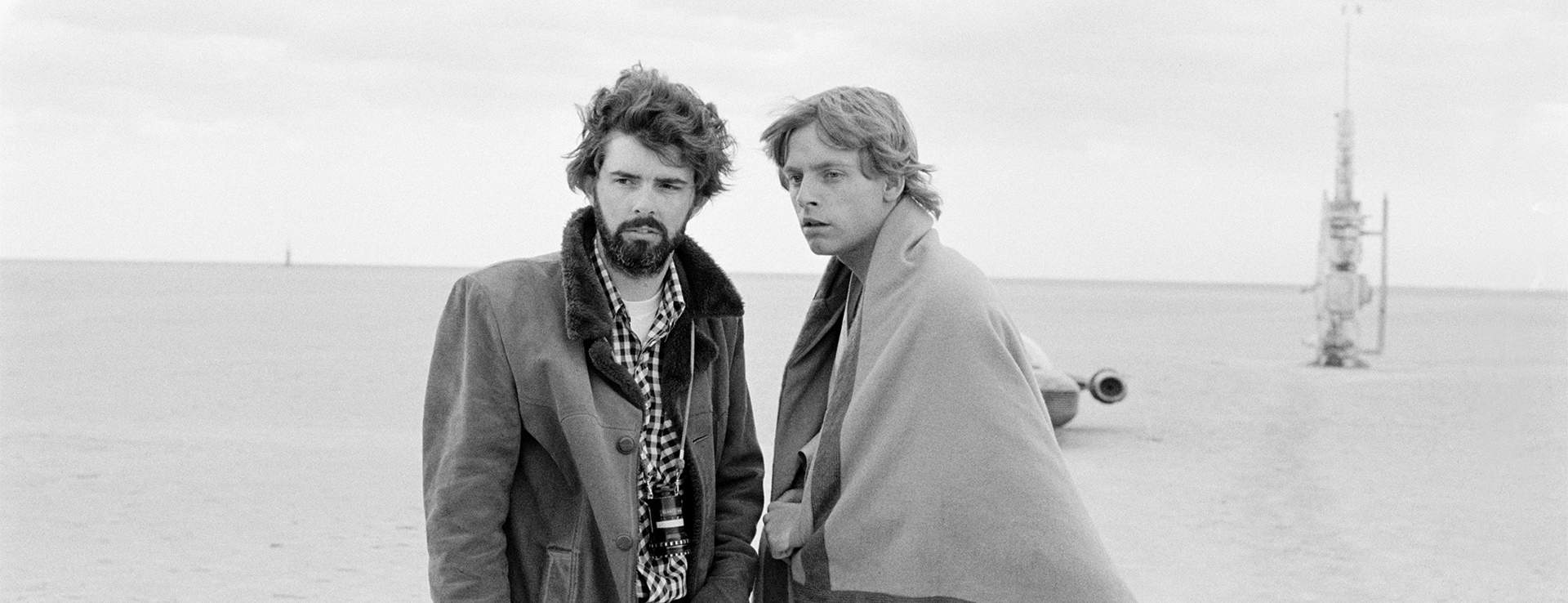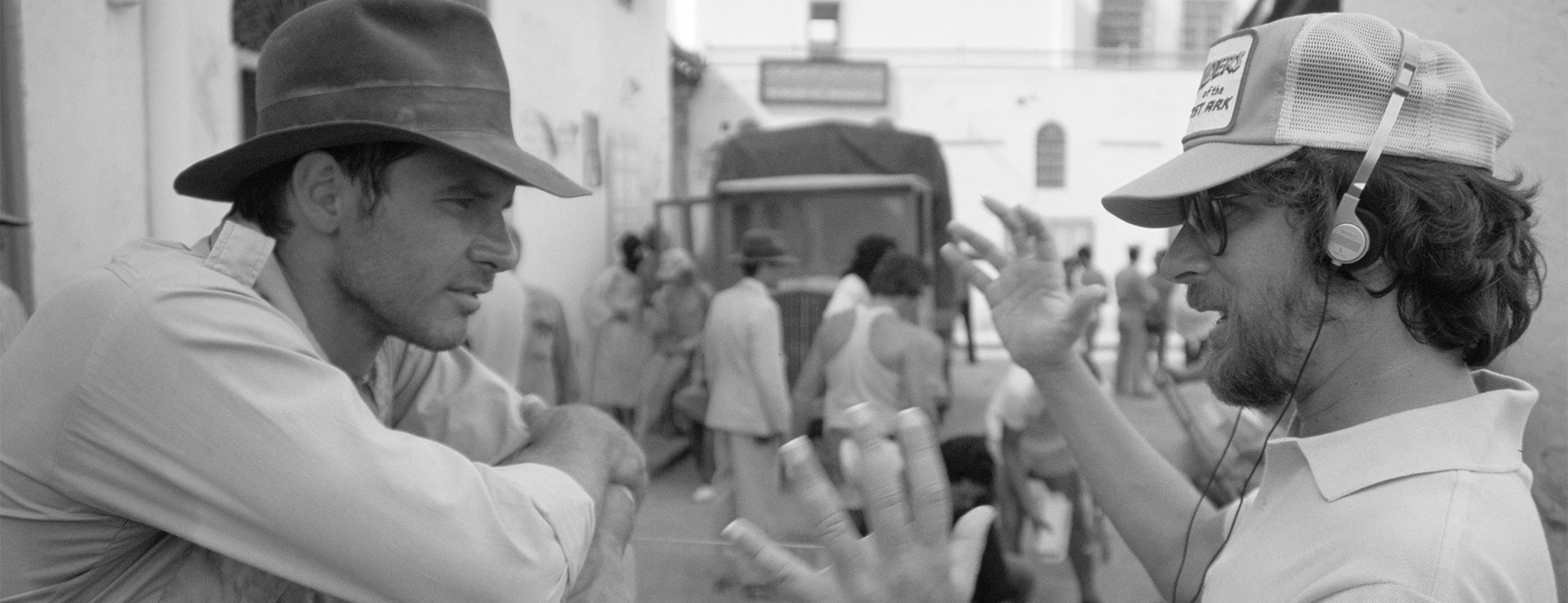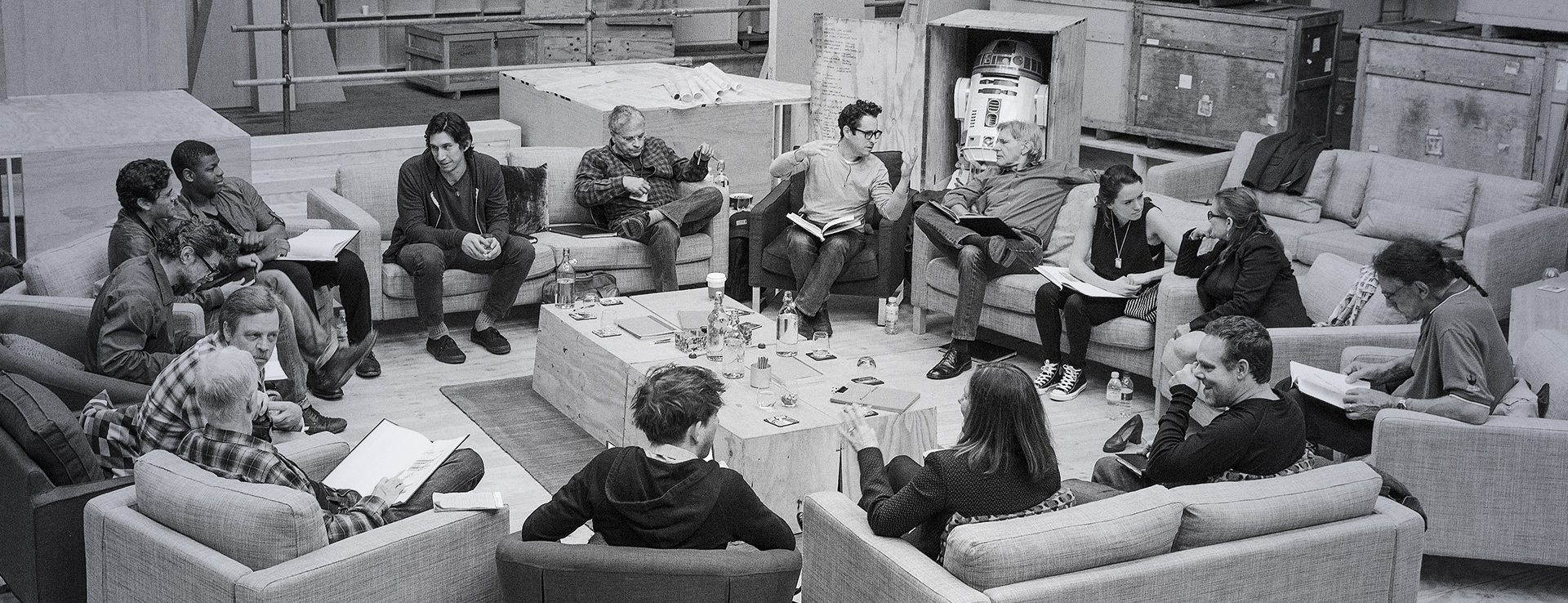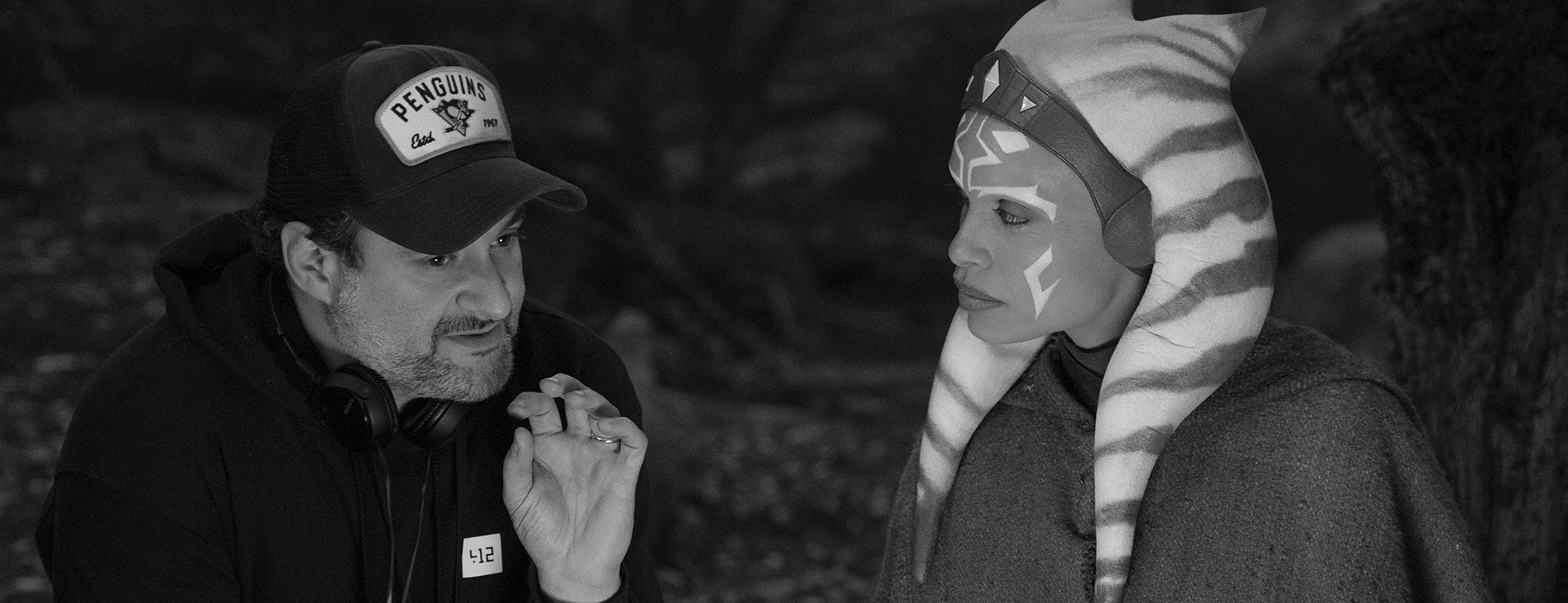1971
• After making THX 1138 for American Zoetrope, George Lucas incorporates Lucasfilm, Ltd. as a means to support his future projects.
1973
• American Graffiti is directed by George Lucas as Lucasfilm’s first production. Inspired by Lucas’ adolescence, it is filmed entirely on location in Northern California and released to great acclaim.
1975
• As George Lucas prepares to make Star Wars: A New Hope, he establishes Lucasfilm’s visual effects division, Industrial Light & Magic (ILM), based in Southern California. He also hires a full-time sound designer, Ben Burtt, to work on the project.
1976
• Principal photography of Star Wars: A New Hope takes place in England and Tunisia while Lucasfilm’s publicity, marketing, and licensing efforts gain momentum.
1977
• Star Wars: A New Hope is released, becoming a world-wide phenomenon that fuels Lucasfilm’s growth as a company.
1978
• Star Wars: A New Hope’s consumer product and publishing campaigns help redefine the scope of film licensing, from Kenner action figures to Del Rey novels to Marvel comics.
1979
• Lucasfilm releases its first sequel, More American Graffiti, while ILM relocates to a facility in Northern California and a new post-production division, Sprocket Systems, expands nearby. Included in the latter is a computer research group that will make digital tools for filmmakers.
1980
• Star Wars: The Empire Strikes Back is released. George Lucas had invested his own money in the production, effectively gambling the future of the entire company. With Empire’s success, Lucasfilm will construct a filmmaking retreat, Skywalker Ranch, in rural Marin County.
1981
• Indiana Jones and the Raiders of the Lost Ark is released while ILM begins taking client productions for visual effects work.
1982
• Lucasfilm Games is established. They will make their first titles with funding from Atari – Rescue on Fractalus! and Ballblazer – both released in 1984.
1983
• Lucasfilm completes work on the first Star Wars trilogy with the release of Star Wars: Return of the Jedi. The film is sound-mixed on Lucasfilm’s new dubbing stage, which includes a groundbreaking new sound system that will be called THX.
1984
• Lucasfilm releases Indiana Jones and the Temple of Doom. The company’s Computer Division premieres a computer-animated short subject, The Adventures of André & Wally B., and unveils the EditDroid, one of the world’s first computer-based, non-linear editing systems. The former project is made with a new imaging computer known as the Pixar.
1985
• The initial phase of Skywalker Ranch’s construction is finished while Lucasfilm supports independent filmmakers on productions including Mishima: A Life in Four Chapters (released 1984), Latino, Howard the Duck, and Labyrinth (both released 1986).
1986
• The Lucasfilm Computer Division is sold to entrepreneur Steve Jobs, becoming Pixar, Inc. (later Pixar Animation Studios). ILM forms its computer graphics team that same year.
1987
• Sprocket Systems relocates to the new Technical Building at Skywalker Ranch, a state-of-the-art facility custom-designed to include theatrical mixing stages, a Foley recording stage, a scoring stage, and a brand-new THX theater.
1988
• Lucasfilm releases the fantasy adventure, Willow, and the true-life story, Tucker: The Man and His Dream.
1989
• Lucasfilm releases Indiana Jones and the Last Crusade while Sprocket Systems reorganizes as Skywalker Sound and starts working with an expanded list of filmmakers. ILM creates a fully computer-generated pseudopod in The Abyss.
1990
• Lucasfilm Games releases the point-and-click adventure for the home computer, The Secret of Monkey Island. Lucasfilm also releases its first live action television series, Maniac Mansion, inspired by the company’s popular adventure game of the same name.
1991
• Lucasfilm and Bantam Books publish Star Wars: Heir to the Empire by Timothy Zahn. This first Legends story of a new era would become a New York Times Best Seller and launch a two-decade string of Star Wars novels.
1992
• Lucasfilm releases The Adventures of Young Indiana Jones on television. Filmed on multiple continents, it’s planned as an educational series to inspire younger viewers.
1993
• ILM creates the first-ever photorealistic, computer-generated dinosaurs for Steven Spielberg’s Jurassic Park. Skywalker Sound completes the illusion by creating the roars and hisses of the park’s denizens.
1994
• Lucasfilm releases Radioland Murders, a feature film that had been in development for 20 years, originating at the same time as Star Wars and Indiana Jones.
1995
• Lucasfilm and the Kenner toy company, now owned by Hasbro, resurrect the Star Wars toy license after a 10-year pause. LucasArts (formerly Lucasfilm Games) releases the CD-ROM adventure The Dig in collaboration with Steven Spielberg.
1996
• Star Wars: Shadows of the Empire is a multimedia storytelling event across multiple platforms, including a Nintendo 64 game, a novel, comic series, original soundtrack, and consumer products.
1997
• Lucasfilm releases the Star Wars Trilogy Special Edition.
1999
• Lucasfilm releases Star Wars: The Phantom Menace. ILM completes over 2,000 visual effects shots for the film, the largest such project up to that time. Skywalker Sound completes its sound mix using the new surround format, Dolby Digital EX. Meanwhile, Lucasfilm’s licensing team partners with LEGO for the first time.
2002
• Lucasfilm releases Star Wars: Attack of the Clones, the first theatrical blockbuster made entirely with a digital camera and toolset. The company had spearheaded the system in partnership with Sony and Panavision.
2003
• LucasArts releases the RPG game Star Wars: Knights of the Old Republic in collaboration with BioWare. Originally growing out of ILM, Lucasfilm Animation becomes a full-fledged division.
2004
• LucasArts releases Star Wars: Battlefront and LEGO Star Wars: The Video Game, each becoming fan-favorite franchises across generations of gamers.
2005
• Lucasfilm releases Star Wars: Revenge of the Sith while ILM, LucasArts, and corporate departments relocate to Letterman Digital Arts Center in the Presidio of San Francisco. Lucasfilm Animation begins work on Star Wars: The Clone Wars and opens a studio in Singapore (later joining ILM).
2006
• ILM creates a pioneering image-based motion capture technology, IMocap, for use on Pirates of the Caribbean: Dead Man’s Chest.
2008
• Lucasfilm Animation releases Star Wars: The Clone Wars in theaters, followed by its television premiere on Cartoon Network. Earlier in the year, Lucasfilm releases Indiana Jones and the Kingdom of the Crystal Skull.
2011
• ILM debuts Rango, its first animated feature. In partnership with BioWare, LucasArts releases Star Wars: The Old Republic, becoming one of the longest-running massively multiplayer online role-playing games.
2012
• Lucasfilm releases Red Tails, a historical film inspired by the Tuskegee Airmen, the first Black flying unit in a segregated U.S. military during World War II. Later that year, Kathleen Kennedy joins as president before Lucasfilm is sold to the Walt Disney Company. ILM opens a studio in Vancouver, Canada.
2013
• Lucasfilm’s publishing division initiates work on a new era of books and comics that will share the same narrative space as the cinematic adventures.
2014
• Lucasfilm Animation debuts Star Wars Rebels on DisneyXD. ILM opens a studio in London, England.
2015
• ILMxLAB (later ILM Immersive) launches as a new division within ILM, developing virtual reality, augmented reality, real-time cinema, theme park, and narrative-based experiences. Lucasfilm releases Strange Magic and Star Wars: The Force Awakens.
2016
• Rogue One: A Star Wars Story is released as the saga’s first stand-alone feature film.
2017
• ILMxLAB collaborates with filmmaker Alejandro González Iñárritu on CARNE y ARENA (Flesh and Sand). Lucasfilm releases Star Wars: The Last Jedi.
2018
• Lucasfilm releases Solo: A Star Wars Story while Lucasfilm Animation premieres Star Wars Resistance on the Disney Channel.
2019
• During one of the company’s busiest years to date, Lucasfilm releases Star Wars: The Rise of Skywalker, ILMxLAB releases Vader Immortal: A Star Wars VR Series, Lucasfilm Games releases Star Wars Jedi: Fallen Order, Star Wars: Galaxy’s Edge opens at Disney Parks, and The Mandalorian premieres on Disney+. ILM also opens a new studio in Sydney, Australia.
2020
• Seven years after the original series finale, Lucasfilm Animation releases the final season of Star Wars: The Clone Wars.
2021
• Lucasfilm releases The Book of Boba Fett and Star Wars: Visions while Lucasfilm Animation premieres Star Wars: The Bad Batch, all on Disney+. The company’s publishing division launches Star Wars: The High Republic across books and comics.
2022
• Lucasfilm premieres Obi-Wan Kenobi and Andor on Disney+ along with a new documentary series about ILM, Light & Magic. Lucasfilm Games unveils Return to Monkey Island as the latest entry in the series. ILM opens a studio in Mumbai, India.
2023
• Lucasfilm releases Indiana Jones and the Dial of Destiny and premieres Ahsoka on Disney+. Lucasfilm Games releases Star Wars Jedi: Survivor while ILMxLAB is renamed ILM Immersive.




